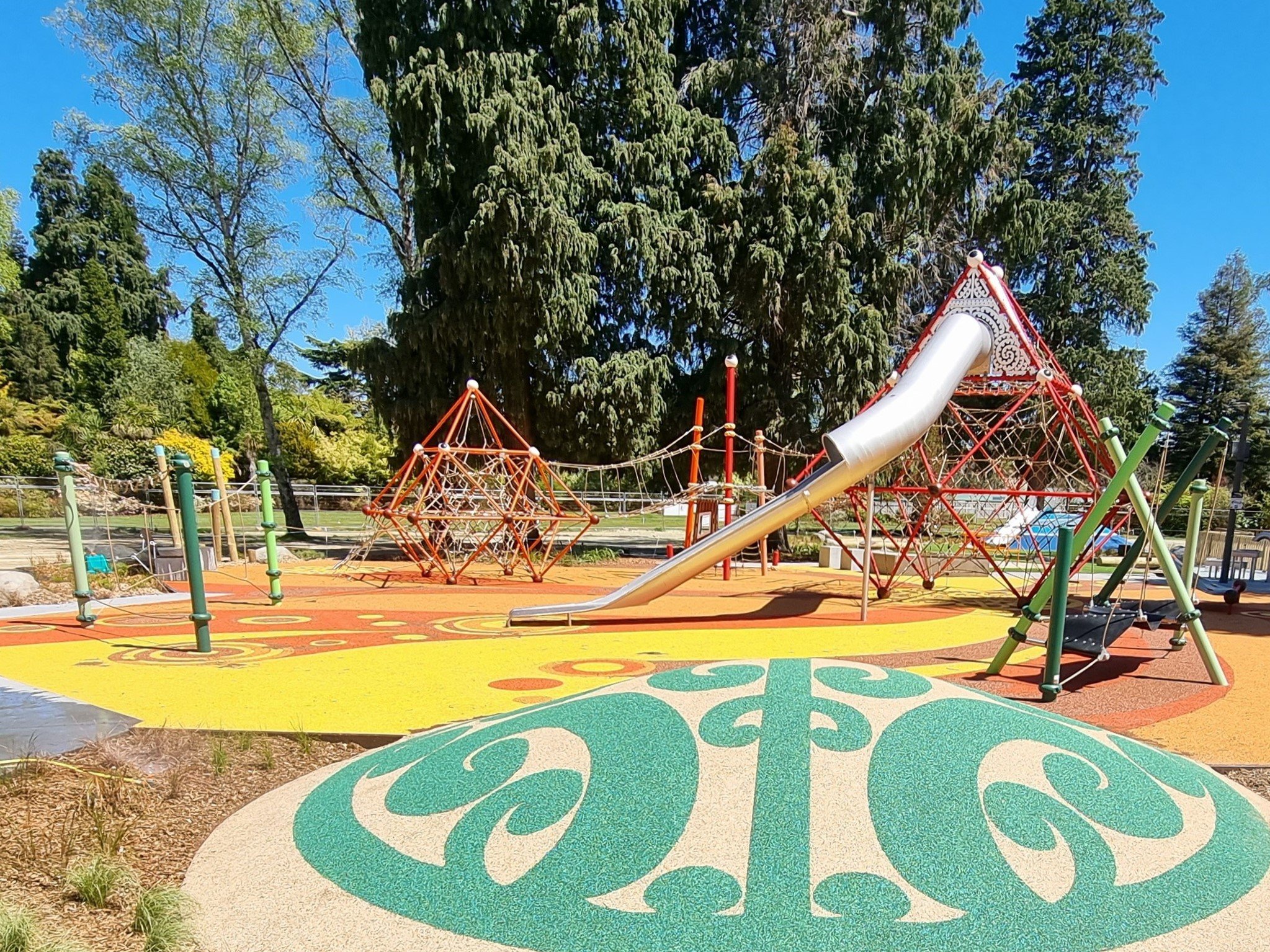Local legend inspires playground design
The story of the battle of the mountains in the central North Island is reflected in the design of Tongariro Domain’s new playspace. Iwi have different versions of the legend but Bespoke Landscape Architects drew from Ngāti Tūwharetoa tradition, written by Hawira Karaitiana.
The story goes that an ancient mountain clan once protected the lands of Tūwharetoa, at the southern end of Lake Taupō. These four mountain warriors were Tongariro, Taranaki, Tauhara and Pūtauaki. All were vying for the affections of the beautiful maiden mountain, Pīhanga. She adored them all but refused to choose one to be her husband, so it was agreed the warriors would fight for her love.
The Battle of the Mountains for the love of Pīhanga is told through the Tongariro Domain playground design.
A fierce war shook the land. The earth trembled and rocks spewed about the dark sky. Soon, light was no more. One after the other the mountains fell, and when the dust settled it was Tongariro who stood victorious.
The defeated warriors were forced to leave but could only travel at night. Pūtauaki looked one last time at Pīhanga, and bowed his head as he walked into the darkness. The rising sun caught him on the Kaingaroa plains, near the town of Kawerau where he stands today.
Taranaki was sad. He travelled west, his tears forming the Whanganui river. At sunrise he stood on the west coast facing the setting sun.
Tauhara was a favourite of Pīhanga and together they had twins named Maunganamu. With one twin in tow, and the other by Pīhanga, Tauhara left, stopping often to look back at his loved ones. By dawn the pair hadn’t travelled far, only reaching the northern end of Lake Taupō. To this day Tauhara watches over the town of Taupō and across to Pīhanga with his Maunganamu nearby. The mist that stretches across the lake towards Pīhanga is a symbol of his affection and devotion.
Tongariro is the big net structure, connected to Ruapehu and Ngauruhoe in the background. Pīhanga sits in the foreground.
After the battle, Tongariro - the mightiest of them all, married Pīhanga. They stand together on the central plateau of the North Island.
A strong and engaging legend, but the challenge for Bespoke was how to interpret it sensitively.
“You’re representing different maunga from different regions,” says Bespoke’s Lee Brazier. “and iwi from each region have their own version of the story. So we were specific all the way through that it was a local story and a local version, and we were guided by local iwi. We took our cues from them.”
Collaboration with Tūwharetoa artist Kingi Pitiroi was a vital part of the project, with the creation of specific designs to represent each maunga within the ground plain of the playspace. The most significant being the scene of the battle beneath and around Tongariro. He also provided the design for a new pou to signify the main entrance.
Mt Taranaki, with the Whanganui River represented on its right.
In the playground Tongariro is represented by a significant new net play structure - it was important that this maunga was the most prominent piece, Brazier says.
“We are telling a story to kids so we needed to make the identity strongly and easily representative, and the net structure achieves that. The main net connects to two other key pieces which represent Ruapehu and Ngauruhoe. Those two aren’t strictly part of the story but because of their proximity (to Tongariro) they’ve been included. They’re such an intrinsic part of that mountain range.’
Pīhanga is represented by an informal play mound nestled next to Tongariro. “She was the only female form and had to be soft and gentle, so we’re not encouraging vigorous play there. It’s more passive.”
Taranaki sits to the west, boulders and a water play feature characterising the ravines and river resulting from the path he carved.
Tauhara is the local maunga and the most significant for local iwi. So rather than represent that on the ground there's a pathway link which provides direct visual reference. This is further celebrated with a pou either side of the path and linking pare form above. This entrance will have future reinforced connections back to the Taupō town centre with developments which are currently underway, says Brazier.
And lastly Pūtauaki - the smallest and most distant maunga - is nestled into the trees, a further space for informal play.
And through play tamariki are taught an important local legend.


